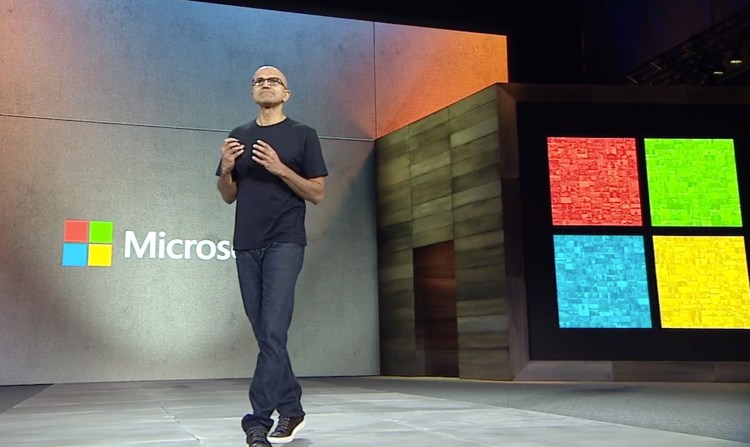Microsoft’s share price has more than doubled since Satya Nadella was named CEO in February 2014. Building on an enterprise business established by his predecessor, Steve Ballmer, Nadella has pushed Microsoft away from its proprietary, on-premise software into a “mobile-first, cloud-first” vision, embracing different platforms, as well as growing markets like the enterprise cloud and AI.
The transition is happening slowly and in a way that’s generating revenue growth. Emblematic of that transition was Microsoft’s announcement during its earnings call Thursday that for the first time, Office 365 revenue surpassed revenue from Microsoft’s traditional Office licensing business.
As Microsoft closed out its latest fiscal year, the company posted earnings showing the results of that effort. Microsoft reported non-GAAP net income of $7.7 billion, or 98 cents a share, on revenue of $24.7 billion in its fiscal fourth quarter. Analysts surveyed by Thomson Reuters forecast revenue of $24.3 billion and net income of 71 cents a share. Most of the surprise profit came from a one-time tax benefit related to past losses in its phone business.
The non-GAAP revenue figure included a $1.4 billion impact from Windows 10 revenue deferrals. GAAP revenue rose 13 percent to $23.3 billion, representing the strongest quarter for revenue growth in nearly two years.
June 5th: The AI Audit in NYC
Join us next week in NYC to engage with top executive leaders, delving into strategies for auditing AI models to ensure fairness, optimal performance, and ethical compliance across diverse organizations. Secure your attendance for this exclusive invite-only event.
The quarter showed a familiar pattern for Microsoft, in which sales of its More Personal Computing segment declined 2 percent to $8.8 billion, while revenue from its Intelligent Cloud business rose 11 percent to $7.4 billion and revenue from its Productivity and Business Process segment rose 21 percent to $8.4 billion.
“Transformation is a continuous process of renewal and reinvestment,” said Nadella in a conference call with investors. “We will continue to invest in high-growth opportunities, lead innovation in cloud and AI, and bring our technology and products together into experiences and solutions that unlock new value for customers.”
For all of Nadella’s transformation, however, Microsoft’s operations still resemble a confederation of loosely related entities, with a wide variety of performance among them. Microsoft’s biggest growth is coming from its enterprise-cloud offerings, such as Azure, which grew 97 percent year-over-year last quarter; Office 365, which grew 43 percent; and Dynamics 365, up 74 percent.
Other areas, meanwhile, are more mixed. Windows OEM revenue rose 1 percent, which Microsoft noted was nevertheless better than the overall PC market (editor’s note: The company points this out every single quarter). Surface revenue declined 2 percent, an improvement over the 26 percent decline in the previous quarter. Microsoft attributed the lower Surface sales to “product lifestyle transitions” amid the Surface laptop’s release.
Enterprise services revenue fell 3 percent on declines in custom support agreements for Windows Server 2003. Gaming revenue rose 3 percent, while search ad revenue increased by 10 percent. Phones, a longtime ambition that the company recently abandoned, declined by $361 million. Microsoft wouldn’t specify a percentage-change figure for phone revenue. Nor would it for LinkedIn, which saw revenue of $1.1 billion.
Microsoft said it expects revenue in the current quarter to be between $23.6 billion and $24.3 billion. The midpoint of that range, $23.95 billion, represents a 7 percent increase over the year-ago figure but is below the analyst consensus estimate of $24.2 billion.
Shares of Microsoft, which closed up 0.5 percent during active trading, vacillated in after-hours trading. The stock rose as high as 1.8 percent following the financial report before falling as much as 1.6 percent on the lower revenue guidance.


